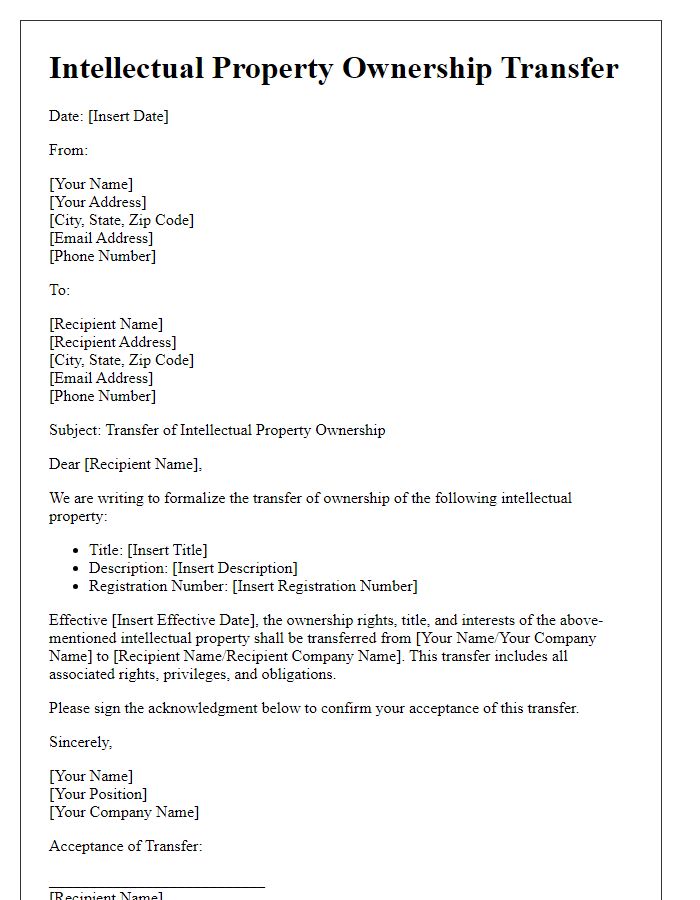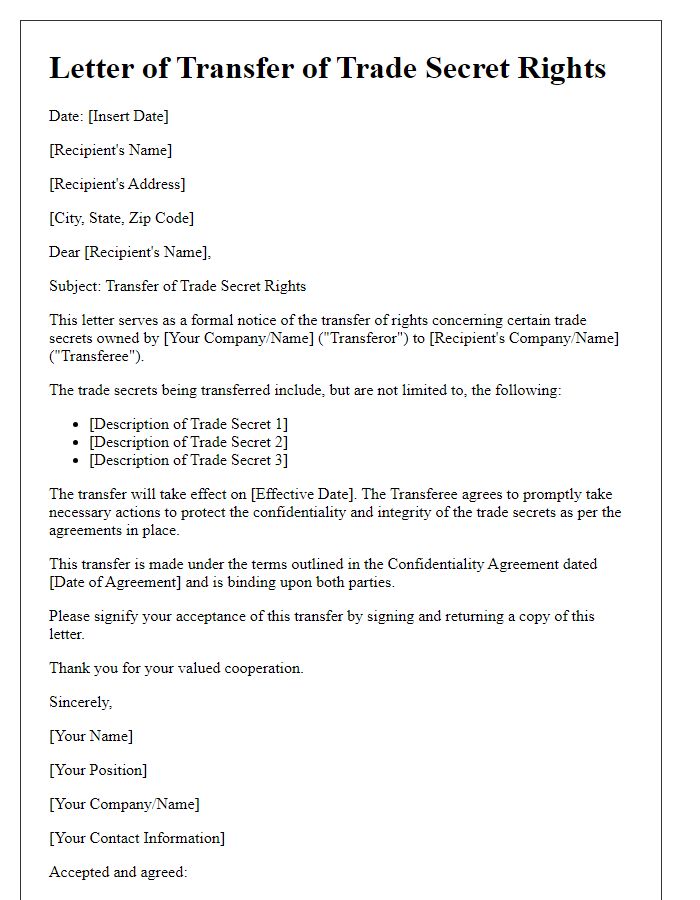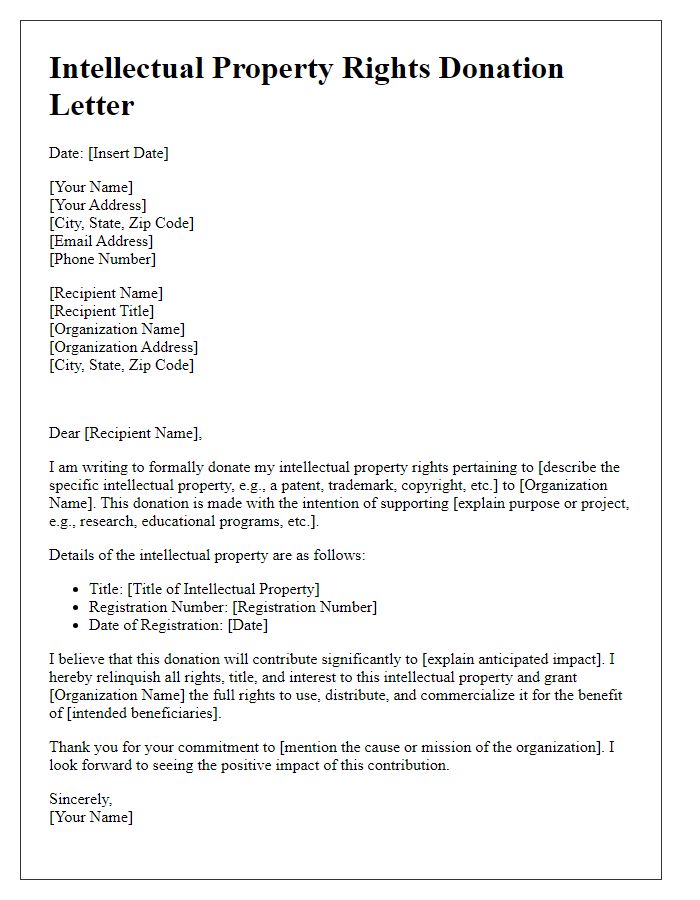Navigating the complexities of intellectual property rights transfer can be daunting, but it doesn't have to be! In this article, we'll break down the essential components of a letter template designed specifically for this purpose, ensuring that your intellectual property is protected and transferred smoothly. We'll discuss the key elements to include, such as the scope of rights being transferred and the importance of clear terms. So, if you're ready to empower your creative endeavors, read on to discover more about crafting the perfect transfer letter!

Party Identification
Intellectual property rights transfer involves two distinct parties: the assignor and the assignee. The assignor, often the creator or current owner (individual or entity), holds legal rights to intellectual property, such as patents or trademarks, and is responsible for initiating the transfer process. The assignee, typically the recipient of the intellectual property rights, can be a business, organization, or individual seeking ownership or exclusive usage rights. Identification of both parties includes full legal names, addresses, and, when applicable, corporate registration numbers or identification numbers to ensure clarity and enforceability within jurisdictions. Accurate identification safeguards against future disputes and solidifies the legal transfer of intellectual property rights.
Description of Intellectual Property
Intellectual property (IP) rights transfer involves the formal transfer of ownership or rights associated with intangible assets, such as patents, trademarks, copyrights, or trade secrets. This process ensures that specific inventions, brands, written works, or proprietary information, originally created by individuals or entities, can be assigned to another party. In the pharmaceutical industry, for instance, a patent for a new drug formula may be transferred from a research institution to a pharmaceutical company, allowing the company to commercialize the product after conducting necessary trials. Similarly, trademarks, such as the golden arches representing McDonald's, hold significant value, and their transfer can impact brand recognition and market positioning. Copyrights, which protect original expressions in literature, art, and technology, allow authors and artists to preserve their rights while potentially granting licenses for reproduction or distribution. Understanding the value and implications of IP rights is essential for individuals and businesses navigating the complex laws governing ownership and usage.
Transfer of Rights Clause
The Transfer of Rights Clause outlines the transfer of ownership of intellectual property between parties. This clause typically specifies the types of intellectual property involved, such as copyrights, patents, or trademarks. It establishes the effective date of the transfer, ensuring clarity regarding when the rights are assigned. The clause may also detail any compensation or royalties associated with the transfer, providing a financial framework for both parties. Furthermore, it often includes warranties regarding the originality and non-infringement of the intellectual property, protecting the receiving party from potential legal disputes. The signatures of authorized representatives finalize the agreement, creating a binding contract that adheres to relevant laws governing intellectual property rights.
Consideration or Compensation
Intellectual property rights transfer agreements typically involve legal documentation outlining the transfer of ownership from one party to another. The compensation aspect can vary significantly, including monetary compensation, royalties, or other forms of consideration. For instance, if a software company, headquartered in Silicon Valley, sells its proprietary algorithm to a startup, the companies may agree on a payment of $500,000 along with a 5% royalty on future revenues generated from the technology. Additionally, clear identification of the intellectual property, such as patents, trademarks, or copyrights, must be specified in detail to avoid any legal disputes. Dates of transfer, signatures, and governing law jurisdiction are also essential elements in formalizing the agreement.
Governing Law and Jurisdiction
The transfer of intellectual property rights, particularly under the framework of legal agreements, is crucial for protecting ownership and usage rights in various creative and industrial fields. Countries like the United States and the United Kingdom have specific statutes and regulations governing these transfers, such as the Copyright Act of 1976 and the Patents Act of 1977 respectively. The chosen governing law impacts enforcement, dispute resolution, and interpretation of terms. Jurisdiction refers effectively to the legal authority of courts to resolve disputes arising from such agreements. For instance, in many cases, parties opt for arbitration or mediation in jurisdictions like New York or London, recognized for their robust legal frameworks and expertise in intellectual property issues. Understanding these elements is essential for all parties involved to ensure that their rights are securely conveyed and legally protected under the appropriate legislative context.













Comments